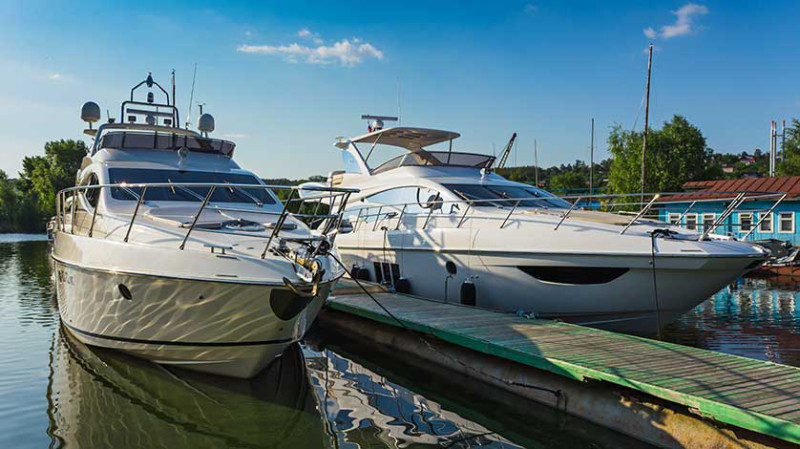
Buying a boat can be an exhilarating experience, but for first-time buyers, the process can also be overwhelming. With so many options available and various factors to consider, it’s essential to approach the boat buying process with a clear plan. This comprehensive guide will walk you through each step, ensuring you make informed decisions and find the perfect vessel for your needs.
Step 1: Determine Your Budget
Before diving into the world of boat shopping, it’s crucial to establish a budget. This budget should encompass not only the purchase price but also ongoing costs associated with boat ownership.
Consider the Following Costs:
- Purchase Price: The initial cost of the boat.
- Insurance: Protecting your investment is essential.
- Maintenance: Regular upkeep is necessary for longevity.
- Storage: Consider where you will keep your boat.
- Fuel: Factor in the cost of fuel based on your expected usage.
- Registration and Taxes: Don’t forget about local regulations.
By understanding these costs, you can set a realistic budget that aligns with your financial situation.
Step 2: Identify Your Needs
Next, consider what you will primarily use the boat for. Different activities require different types of boats. Here are some common uses:
- Fishing: If you plan to fish, look for boats designed for that purpose, such as bass boats or center consoles.
- Recreational Boating: For leisurely outings, consider pontoons or deck boats.
- Sailing: If you’re interested in sailing, you’ll want to explore sailboats.
- Water Sports: Wakeboarding or skiing requires a specific type of boat, often a ski boat.
Understanding your needs will help narrow down your options and make the selection process easier.
Step 3: Research Different Types of Boats
Once you have a clear idea of your budget and needs, it’s time to research the different types of boats available. Here are some popular categories:
Types of Boats:
- Powerboats: These boats are powered by engines and are great for speed and convenience.
- Sailboats: Ideal for those who enjoy the art of sailing and prefer a more leisurely pace.
- Pontoons: Perfect for family outings and social gatherings on the water.
- Canoes and Kayaks: Great for exploring calm waters and enjoying nature.
- Yachts: Luxurious options for those looking to spend extended time on the water.
Each type of boat has its own advantages and disadvantages, so take the time to research and understand what fits your lifestyle best.
Step 4: New vs. Used Boats
Deciding between a new or used boat is a significant choice that can impact your budget and overall satisfaction. Here are some pros and cons of each option:
New Boats:
- Pros: Warranty coverage, the latest technology, and customisation options.
- Cons: Higher price tag and depreciation as soon as you drive it off the lot.
Used Boats:
- Pros: Lower cost, less depreciation, and potential for better value.
- Cons: Possible hidden issues, limited warranty, and outdated technology.
Evaluate your priorities and decide which option aligns best with your needs and budget.
Step 5: Find a Reputable Dealer or Seller
Whether you choose to buy new or used, finding a reputable dealer or seller is crucial. Here are some tips to help you in your search:
- Research Online: Look for reviews and ratings of local dealers.
- Ask for Recommendations: Talk to fellow boaters or friends who have experience in buying boats.
- Visit Boat Shows: These events can provide a wealth of information and allow you to meet dealers in person.
Once you have a list of potential sellers, reach out to them to ask questions and gauge their customer service.
Step 6: Inspect the Boat
Before making a purchase, it’s essential to inspect the boat thoroughly. If you’re buying a used boat, consider hiring a marine surveyor to assess its condition. Here are some key areas to inspect:
Inspection Checklist:
- Hull Condition: Look for cracks, blisters, or signs of damage.
- Engine Performance: Check for any unusual noises or leaks.
- Electronics: Ensure all navigation and communication equipment is functioning.
- Interior Condition: Inspect upholstery, flooring, and any amenities.
- Safety Equipment: Verify that life jackets, flares, and fire extinguishers are present and in good condition.
A thorough inspection can save you from unexpected repairs down the line.
Step 7: Take a Test Drive
Just like buying a car, taking a boat for a test drive is essential. This will give you a feel for how the boat handles on the water. Pay attention to the following:
- Stability: Does the boat feel stable and secure?
- Speed: How does it perform at various speeds?
- Handling: Is it easy to maneuver and control?
- Comfort: Are the seating and layout comfortable for your needs?
A test drive can help you determine if the boat is the right fit for you.
Step 8: Negotiate the Price
Once you’ve found the right boat, it’s time to negotiate the price. Here are some tips to help you get the best deal:
- Do Your Research: Know the market value of similar boats to strengthen your negotiating position.
- Be Prepared to Walk Away: If the price isn’t right, don’t be afraid to look elsewhere.
- Consider Additional Costs: Factor in any repairs or upgrades needed when negotiating.
Negotiation is a normal part of the buying process, so don’t shy away from it.
Step 9: Finalise the Purchase
Once you’ve agreed on a price, it’s time to finalise the purchase. This typically involves signing a purchase agreement and making a deposit. Here are some key points to consider:
- Review the Contract: Ensure all terms are clear and agreed upon.
- Understand Financing Options: If you’re financing the boat, review the terms carefully.
- Complete the Paperwork: Ensure all necessary documents are signed and submitted.
Finalising the purchase is an exciting step, but it’s essential to ensure everything is in order.
Step 10: Prepare for Ownership
Congratulations! You’re now a boat owner. However, there are still a few things to consider as you prepare for ownership:
Ownership Checklist:
- Register Your Boat: Ensure your boat is registered according to local laws.
- Get Insurance: Protect your investment with the right insurance coverage.
- Learn About Maintenance: Familiarise yourself with routine maintenance tasks.
- Join a Boating Community: Connect with other boaters for support and advice.
Being prepared for ownership will enhance your boating experience and ensure you enjoy your new vessel for years to come.
Conclusion
Buying a boat is a significant investment, but with careful planning and research, first-time buyers can navigate the process with confidence. By following this step-by-step guide, you’ll be well-equipped to make informed decisions and find the perfect boat for your needs.


